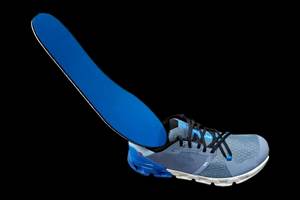Looking for Lindberghs
Every paradigm-shifting invention throughout human history has been met with skepticism. CW editor-in-chief Jeff Sloan says the composites industry has need of those willing to attempt what most believe impossible.
- Wind/Energy
- Cutting/Kitting
- Automotive
- Pultrusion
- Defense
- Carbon Fibers
- Editorial
- Molds/Tools
- Machining/Drilling
- Materials
- Glass Fibers
- Fabrics/Preforms
- Pressure Vessels
- ATL/AFP
- Consumer
- Processes
- Epoxies
- Resins
- Thermoplastics
- Aerospace
- Natural Fibers
- Mass Transit
- Reinforcements
- Design & Tooling
- Markets
- Marine
- Injection/Overmolding
- Construction
- Hi-Temp Resins
- Compression Molding
- Design/Simulation
- Prepregs
- Nanomaterials
- RTM
- Curing
- Infusion
- Materials Testing
- Core
- Filament Winding
I am reading a book called The Aviators, by Winston Groom. Engagingly written, well researched and insightful, it tells the story of the three aviators who, Groom argues, are most responsible for the survival and development of the US aviation industry, especially in its nascent period in the early 20th Century: Eddie Rickenbacker, Jimmy Doolittle and Charles Lindbergh.
One of the things I find so intriguing about the study of such a history is the opportunity to understand people and events in the context of their time. Too often, when we study historical events, we are (whether we know it or not) biased by the outcome. We know, for instance, who won the war, but we don’t appreciate that those fighting in the war didn’t have that certainty of outcome; in fact, they labored under great uncertainty, fear and distress. (This is why historians so highly value diaries and journals — they are untainted by hindsight.)
Today, when we look at the aerospace industry, we see the result of 100-plus years of innovation, daring and technological advancement that have led, apparently, to this point: Global, trans-ocean, high-speed passenger travel; supersonic, super-weaponized fighters; stealthy, nimble unmanned aircraft; manned and unmanned spacecraft.
There was, however, a time when such an outcome was inconceivable and, thus, unlikely. Groom makes clear in The Aviators that governments and private industry struggled, early on, to understand if and how the airplane could be useful as a vehicle for commercial or military use. The United States military, in particular, was reluctant to incorporate aircraft into its arsenal, even after the success fighter pilots enjoyed in World War I.
This uncertainty is one reason why Lindbergh’s nonstop, transatlantic flight from New York to Paris in 1927 was so monumental. When Lindbergh landed in Paris, he almost single-handedly ushered in a new mode of human travel. Indeed, today it’s extremely difficult for us to imagine what our lives would be like without the speed and convenience of air travel. It seems like it was inevitable. But before Lindbergh took off, very few people thought it could be done. No less than Wilbur Wright, one of the inventors of the first airplane, in fact, believed that such a flight in an airplane was impossible. Lindbergh succeeded because he was willing to apply technology and ideas that others hadn’t: He flew a more aerodynamic mono-wing plane; he flew alone (no navigator); he eschewed extra weight (he even trimmed the edges off of his navigation maps!); he flew what was, effectively, a fuel tank with wings.
Of course, the aerospace industry is not unique. Every paradigm-shifting invention throughout human history has been met with skepticism. Even the wheel itself, one can imagine, must have induced much head-scratching before its potential was realized.
Composites are no different, and it would be helpful if we could zip 50 years into the future to get a glimpse of where carbon fiber and glass fiber structures are headed. Instead, we’re here, in the moment. In context. And what is that context? Over the past 40 years, composites have seen tremendous growth and evolution, but in some quarters, they’re still that poorly understood “niche” material — the square peg manufacturers want to squeeze into the round hole now occupied by metals and concrete and other established materials.
The times require Rickenbackers, Doolittles, Lindberghs — people willing to evangelize, innovate, take risks and apply composites in “impossible” ways. The good news is that the composites industry already has such leaders. We just need to let them fly.
Related Content
Lighter, stronger, faster bionic hand aided by composites design
Psyonic’s touch-sensing prosthetic hand leverages bionic technology, 3D printing and a carbon fiber composite exterior for light weight, high strength and high-tech functionality.
Read MoreExoTechnologies completes testing on recyclable motorcycle helmet
Helmet fabricated from Danu composites demonstrates improved weight reduction, impact resistance and complete recyclability compared to carbon fiber alternatives.
Read MoreComposites end markets: Electronics (2024)
Increasingly, prototype and production-ready smart devices featuring thermoplastic composite cases and other components provide lightweight, optimized sustainable alternatives to metal.
Read MoreRunning shoe insoles get a lift with thermoplastic fiberglass tapes
FlexSpring insoles take advantage of unidirectional, continuous fiberglass and thermoplastics to enable next-level performance for the everyday runner.
Read MoreRead Next
Plant tour: Daher Shap’in TechCenter and composites production plant, Saint-Aignan-de-Grandlieu, France
Co-located R&D and production advance OOA thermosets, thermoplastics, welding, recycling and digital technologies for faster processing and certification of lighter, more sustainable composites.
Read More“Structured air” TPS safeguards composite structures
Powered by an 85% air/15% pure polyimide aerogel, Blueshift’s novel material system protects structures during transient thermal events from -200°C to beyond 2400°C for rockets, battery boxes and more.
Read MoreDeveloping bonded composite repair for ships, offshore units
Bureau Veritas and industry partners issue guidelines and pave the way for certification via StrengthBond Offshore project.
Read More






















